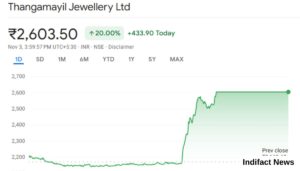
NVIDIA Qualcomm India Deep Tech
For decades, the global narrative often confined India’s technological prowess to the realm of software services and IT outsourcing. It was seen, perhaps unfairly, as the world’s back office brilliant at application development but fundamentally reliant on other nations for the foundational building blocks of technology, such as advanced semiconductors, deep-space systems, and military robotics. Today, that narrative has not only been challenged but arguably shattered by a strategic confluence of global capital, technical might, and sovereign policy ambition. The announcement that NVIDIA Qualcomm India Deep Tech are joining forces with a coalition of U.S. and Indian venture capital firms under the banner of the India Deep Tech Alliance (IDTA) is far more than a simple financial news story; it represents a seismic shift in global supply chain politics and a strategic declaration of India’s intent to achieve technological independence.
Are we, in fact, witnessing India’s “Sputnik moment,” where a national goal of creating core, sovereign technologies be it satellites, quantum systems, or next-generation chips is met with an unprecedented mobilization of resources designed to redefine its global standing? The IDTA, initially launched in September with a robust $1 billion commitment, has now secured a fresh injection of over $850 million from new members, including Qualcomm Ventures and six influential Indian venture firms: Activate AI, Chiratae Ventures, InfoEdge Ventures, Kalaari Capital, Singularity Holdings, and YourNest Venture Capital. This brings the total pledged capital to significantly over $1.85 billion, cementing the alliance’s goal to mobilize resources approaching $2 billion specifically for Indian-domiciled deep tech enterprises.
The Chronic Disease of ‘Impatience’ and the Funding Gap
To truly understand the importance of this massive capital pledge, NVIDIA Qualcomm India Deep Tech one must acknowledge the structural fragility of India’s deep tech ecosystem. Deep tech ventures those built on fundamental scientific breakthroughs or frontier engineering are inherently different from consumer platforms or application-layer software businesses like Zomato or Swiggy. They demand “patient capital,” as they typically require years of intensive, high-risk research and development before a product is market-ready or profitable. This prolonged development timeline and uncertain path to return have traditionally made most traditional venture capitalists exceptionally nervous, leading to a chronic imbalance in the funding landscape.

Industry data confirms this problem. NVIDIA Qualcomm India Deep Tech While deep-tech funding in India saw an encouraging surge of 78% in 2024, reaching $1.6 billion, this amount remained a tiny slice of the overall startup investment pool, accounting for roughly one-fifth of the total capital raised. The scarcity of patient, early-stage funding specifically targeting the Seed through Series B rounds has long been identified as the major Achilles’ heel for ambitious Indian founders attempting to build foundational technologies.
The Geopolitical Premium on Patient Capital
However, the nature of capital flowing into the IDTA suggests that the investment calculation has been fundamentally adjusted. The presence of strategic U.S. capital (such as Celesta Capital and Accel, foundational members) and, crucially, the involvement of global technology leaders like NVIDIA Qualcomm India Deep Tech, indicates that the investment objective transcends immediate commercial return. This movement is instead driven by the pressing global need to secure supply chain resilience and foster technological alignment among democratic nations.
In essence, the long gestation periods typical of deep tech are being actively “de-risked” by geopolitical necessity. By assigning a strategic premium to patience that traditional VCs could not afford, this alliance transforms into a direct commercial instrument of U.S.-India strategic policy, such as the Initiative on Critical and Emerging Technology (iCET). The focus is no longer just on maximizing profit, but on fostering technological sovereignty and developing a democratic counterbalance in critical technological areas, making the commitment to deep tech a strategic imperative rather than a mere market opportunity.
The Power Players – Capital and Compute Unite
The IDTA is structured not simply as a monolithic fund, but as a synergistic ecosystem where capital, technical expertise, and foundational technology are supplied by specialized players. The contributions from NVIDIA Qualcomm India Deep Tech, in particular, reveal a nuanced understanding of where India’s deep tech ecosystem needs the most immediate and strategic support.
NVIDIA: The Technical Tsar, Not the Treasurer
Perhaps the most striking strategic element of the IDTA is NVIDIA’s role. The NVIDIA Qualcomm India Deep Tech company, which dominates the global supply of high-end AI chips (GPUs), has joined the alliance as a founding member and Strategic Technical Advisor but is conspicuously not committing direct financial capital. Why would the world’s most valuable chipmaker choose to contribute expertise over cash?

NVIDIA Qualcomm India Deep Tech’s core contribution involves providing indispensable technical guidance, policy input, and critical training programs for startups. Specifically, the company will offer developer enablement and access to cutting-edge technical resources via the NVIDIA Deep Learning Institute. This strategic positioning leverages the fact that in the global race for AI leadership, the single most significant constraint is access to sophisticated compute power, which is overwhelmingly supplied by NVIDIA’s proprietary GPU hardware and the CUDA software ecosystem.
By offering access, NVIDIA Qualcomm India Deep Tech training, and integration guidance the currency of compute instead of cash, NVIDIA secures a brilliant strategic advantage: it ensures that the rapidly expanding pool of Indian AI and semiconductor talent is trained exclusively on, and built around, the NVIDIA technology stack. This deep ecosystem lock-in guarantees future market dominance for NVIDIA as the foundational infrastructure layer for the entire Indian deep tech revolution, a contribution that is strategically far more valuable than a direct capital commitment to a specific fund.
Qualcomm Ventures: Investing at the Edge
In contrast to NVIDIA’s focus on compute infrastructure, Qualcomm Ventures has committed financial capital as part of the new capital infusion. Qualcomm’s rationale is rooted in its domain expertise in connectivity and on-device processing. The firm’s strategic interest focuses specifically on the practical implementation of AI and foundational technologies at the ‘Edge’ meaning in embedded systems, machines, and devices NVIDIA Qualcomm India Deep Tech.

NVIDIA Qualcomm India Deep Tech’s existing investment history in India, which includes early bets on companies like MapmyIndia and IdeaForge (an unmanned aerial systems manufacturer), demonstrates its comfort with hardware-adjacent plays and longer-gestation periods. With its strength in connectivity, 5G/6G systems, and low-power on-device AI, Qualcomm’s participation suggests a clear mandate to support startups building tangible applications in industrial IoT, robotics, drones, and automotive systems areas where India possesses solid core engineering capabilities.
The VC Vanguard: Architects of the Future
The NVIDIA Qualcomm India Deep Tech IDTA is anchored by key financial architects from both the U.S. and India. Celesta Capital, which is leading the charge, alongside firms like Accel, Blume Ventures, Premji Invest, Gaja Capital, Ideaspring Capital, and Venture Catalysts, forms the core investment consortium. Their primary mandate is to deploy patient capital over the next five to ten years, specifically targeting companies incorporated in India. This collective action directly addresses the notorious capital gap by focusing on the earliest and riskiest stages, from Seed through Series B, ensuring founders can access the necessary resources without excessive dilution during the crucial R&D phases.
The Investment Matrix – Sectors and Sovereign Ambition
The NVIDIA Qualcomm India Deep Tech investment strategy of the IDTA is not diversified across all technology sectors; it is laser-focused on specific verticals deemed critical for achieving national strategic autonomy and long-term economic independence. The alliance’s capital is aimed at supporting companies that build genuine sovereign intellectual property (IP), shifting India’s position from a major user of imported technologies to a full-fledged builder.
The AI Gold Rush and the Silicon Dream
Artificial Intelligence (AI) currently dominates India’s deep tech landscape, NVIDIA Qualcomm India Deep Tech with estimates suggesting that nearly 74% of deep tech startups in the country are AI-focused. This investment supports ambitious indigenous projects, such as developing foundational Large Language Models (LLMs) tailored for Indian languages, exemplified by initiatives like Sarvam AI. The success of these initiatives is intrinsically linked to access to high-performance computing resources. The IDTA, particularly through NVIDIA’s engagement, helps connect these startups with the computational lifeblood needed for AI development, complementing the massive state investment in compute infrastructure.
The NVIDIA Qualcomm India Deep Tech semiconductor sector is the second pillar of this strategic push. India’s chip market is projected to expand monumentally, potentially reaching $100–$110 billion by 2030, signifying a strategic pivot from software to hardware. IDTA capital is positioned to support the design segment, leveraging India’s vast pool of semiconductor design engineers a talent base estimated to be 20% of the world’s total.
The NVIDIA Qualcomm India Deep Tech priority lies in supporting the fab-less model, where Indian firms focus on designing proprietary chips and IP, while collaborating with external or forthcoming domestic fabrication facilities (fabs) for manufacturing. Startups benefiting from the government’s Design Linked Incentive (DLI) scheme, such as Vervesemi Microelectronics, are already developing advanced Integrated Circuits (ICs) for critical sectors like defense, electric vehicles, and aerospace, demonstrating genuine indigenous IP creation.
The De-risked Infrastructure Strategy
The NVIDIA Qualcomm India Deep Tech targeted investment areas reveal a coordinated division of labor between private venture capital and the Indian state that significantly reduces financial risk for the IDTA. Building deep tech infrastructure, especially for semiconductors, requires astronomical capital expenditure (CAPEX) for foundries, advanced laboratories, and test facilities.
The NVIDIA Qualcomm India Deep Tech IDTA and its associated VCs are intelligently concentrating their efforts on the high-margin, relatively low-CAPEX components of the ecosystem, such as software, AI models, and chip design (the fab-less model). Concurrently, the Indian government is absorbing the high-risk, high-CAPEX burden of physical infrastructure development. For example, the government has already committed nearly ₹65,000 crore under the ₹76,000 crore Production Linked Incentive (PLI) scheme and is supporting massive projects like the $10 billion Tata fab investment and the launch of end-to-end Outsourced Semiconductor Assembly and Test (OSAT) pilot facilities. This collaborative approach allows private capital to move faster and minimizes the financial downside, while still achieving the overarching national goal of establishing an end-to-end semiconductor and deep tech ecosystem.
Beyond AI and semiconductors, the investment mandate encompasses other sectors vital for national strategic independence, including Space Technology, Quantum Computing, Robotics, Medical Devices, and Biotech. These are areas where the government itself is set to become the most important early-stage consumer.
Policy as the Ultimate Platform – De-Risking Deep Tech
The NVIDIA Qualcomm India Deep Tech mobilization of $2 billion in private and corporate capital is not occurring in an economic vacuum; it is explicitly designed to capitalize on the enormous structural scaffolding erected by the Indian state. The alliance is structured to build directly on the momentum generated by massive government spending, notably the recent launch of a $12 billion (₹1 lakh crore) initiative to spur research and development, in addition to the existing ₹76,000 crore PLI scheme for electronics manufacturing.
Can private investment truly ignite a technological revolution without the enormous, sustained policy backing provided by the state? Analysis suggests that government support is the essential co-pilot for the IDTA, helping to lower technical barriers and secure early market access for deep tech ventures.
Leveraging Compute and Design Incentives
Two government initiatives are particularly critical in directly reducing the operational hurdles faced by deep tech startups. First, the Design Linked Incentive (DLI) Scheme offsets significant R&D costs by sanctioning domestic chip design projects and providing access to industry-standard Electronic Design Automation (EDA) tools. This effectively subsidizes the most expensive and specialized element of the chip design process, rapidly accelerating indigenous IP creation.
Second, the IndiaAI Mission addresses the most acute resource bottleneck: compute. NVIDIA Qualcomm India Deep Tech With an allocation exceeding ₹10,300 crore and a plan to deploy 38,000 GPUs, the mission offers a crucial resource subsidy, effectively mitigating the highest variable cost for fledgling AI startups. When combined with the technical guidance provided by NVIDIA, this government commitment ensures that India’s AI innovators have the tools and training necessary to compete globally.
Public Procurement as the Ultimate VC Exit Strategy
Perhaps the most potent mechanism through which policy de-risks deep tech is government procurement. Deep tech inherently suffers from high market uncertainty and lengthy time-to-revenue. One of the most powerful strategies to counter this is for the state to act as the guaranteed “first market.”
In India, NVIDIA Qualcomm India Deep Tech public procurement accounts for a substantial 20–22% of the country’s Gross Domestic Product (GDP). If the government enacts mandates or strong incentives to purchase indigenous deep tech products for instance, buying Indian-designed microprocessors for defense systems, national infrastructure, or digital services it provides the startup with a vital, guaranteed initial customer base. This action transforms a high-risk, uncertain market path into a low-risk, subsidized, and validated ramp-up phase. For VCs, this significantly improves the prospect of a successful exit, as proven traction and product stability make these IDTA-backed startups immediately attractive to larger global investors and enterprise buyers.
Addressing Talent and IP Creation
The challenges of talent acquisition and specialized infrastructure remain significant for Indian deep tech companies. Startups struggle to compete with established tech giants for highly skilled professionals in specialized fields such as machine learning and materials science. The IDTA alliance, NVIDIA Qualcomm India Deep Tech by committing to hands-on mentorship, technical training, and policy advocacy, directly targets these localized structural weaknesses. The ultimate goal is not just to generate revenue, but to systematically cultivate intangible Intellectual Property (IP), which, once established, creates “higher entry barriers and export-led growth,” accelerating the steepening of India’s deep tech development curve.
Geopolitics and Global Supply Chain Rewiring
The NVIDIA Qualcomm India Deep Tech formation of the IDTA must be understood within the context of macro-geopolitical maneuvering, particularly the ongoing shifts in global supply chains prompted by strategic competition and the desire for technological independence. The alliance is a powerful, commercial manifestation of the official U.S.-India Initiative on Critical and Emerging Technology (iCET), which was launched specifically to foster cooperation in semiconductors, 5G/6G wireless infrastructure, and advanced defense technologies.
Friend-Shoring: A Strategic Imperative
Amidst a global climate characterized by de-risking and the vulnerability of concentrated manufacturing hubs, the IDTA explicitly strengthens the U.S.-India tech corridor. From Washington’s perspective, India’s rapidly growing innovation economy is viewed as a vital, democratic partner and a crucial strategic counterbalance in the Indo-Pacific region. Supporting India’s technological ascension enjoys rare bipartisan backing in the U.S., highlighting its importance as a mechanism for reinforcing global democratic supply chains.
This strategic pivot constitutes a deliberate effort to diversify the production of foundational technologies including chips and critical AI models away from jurisdictions with political sensitivities or potential instability, toward a politically aligned, democratic nation. This action is not merely about finding a new manufacturing location; it is about actively globalizing the production of critical intellectual property under a shared democratic umbrella, promoting a “deep, democratic” innovation partnership that strengthens the resilience of the global technological order NVIDIA Qualcomm India Deep Tech.
The Narrative Shift: From Outsourcing to Origination
Beyond the financial and strategic calculations, the NVIDIA Qualcomm India Deep Tech IDTA validates a crucial psychological and structural evolution within India. This unprecedented alliance signals the decisive end of India’s era as a purely application-focused startup environment, elevating it up the global value chain from pure software services to frontier engineering. This capital and technical partnership confirms India’s transformation from a simple user of imported technologies into an authentic builder and originator of sovereign IP. This is a massive endorsement of the technical depth and ambition emerging from India’s research labs and startup garages.
Challenges and The Evergreen Outlook
Despite the overwhelming momentum and the sophisticated nature of the IDTA, the NVIDIA Qualcomm India Deep Tech road to establishing India as a global deep tech powerhouse is long and fraught with inherent challenges. As observers have noted, deep tech growth is often characterized as “slow, not stagnant”. The ecosystem still faces structural hurdles that money and technical mentorship alone cannot instantly solve.
Regulatory complexity, particularly in sensitive sectors like biotechnology and health technology, can create time-consuming and costly compliance burdens that slow down innovation and market entry. Furthermore, despite the government’s efforts, the required specialized infrastructure such as advanced laboratories and dedicated research facilities remains scarce outside of India’s major metropolitan hubs, compounding the difficulty of establishing a fully dispersed deep tech ecosystem.
The NVIDIA Qualcomm India Deep Tech ultimate test for the IDTA is not merely the size of the pledged capital, but the alliance’s ability to consistently convert its technical guidance, policy advocacy, and financial liquidity into globally competitive, scaled enterprises. The goal is to generate repeatable blueprints for scaling IP-heavy businesses, achieving what some critics have called the elusive dream of creating the “Nvidia of India”. If the IDTA can successfully bridge the gap between scientific ambition and market execution, ensuring that capital access leads to IP generation and export-led growth, the long-term prognosis for India’s technological sovereignty is overwhelmingly positive.
The NVIDIA Qualcomm India Deep Tech confluence of $2 billion in coordinated private and corporate capital, fortified by the essential computational muscle of NVIDIA and the strategic interest of Qualcomm, signals the definitive alignment necessary for India to realize its deep tech potential. The stage is set, the foundational capital is committed, and the policy landscape is supportive. The next decade will not just be about financial returns for the IDTA members, but about whether this unprecedented partnership can deliver on the profound promise of technological sovereignty, establishing India as an indispensable global hub for the critical technologies that will define the twenty-first century. The world is watching to see if this model of “Silicon Diplomacy” can succeed.







